Ayano Sudo is an immensely gifted artist with works spanning self-portraits to collaborations with
talented models. Where does her heartfelt camerawork that parallels her aesthetic vision come from and
what inspires her ideas?
We sat down to talk to her about her hypnotizing world view in which she makes phenomena visible and
tangible, even as she digs deep into the world of the unseen.
All my work begins with everyday suspicions or doubts about “Why does x or y happen?”
When I'm shooting, I'm using photography to investigate these questions.
In my teens, I aspired to be a fashion designer or a fashion photographer. And I remember wanting to be a shojo manga [girl's comics] artist when I was in elementary school. That feeling has stuck with me, like a dreamy teenager, and I'm still attracted by the idea. Ultimately, I've ended up becoming what's labeled as an “artist”. But I still believe those past emotions are present in my work, almost as if I'm realizing childhood longings and aspirations within my photos.
Sawada's idea that she brought to me, to have an exhibition showing two sides of the same object, was very radical. I was fortunate to see firsthand how formidable Sawada is as an artist as the exhibition came together. I like to think the space allowed our works to coexist.
We met to talk about the space and installation for the exhibition, but we didn't particularly discuss the eventual themes of our works. But once the works were complete and put up on the walls, our world views meshed together almost by happenstance. This was true in the small details, just as much as the overall ambience. For example, in one of my portraits there's a person in a black suit sitting on a leather sofa, and Sawada captured a similar situation in one of her older works created when she was a student. I think the parallel existence of the photographs, despite their different locations and eras, imbued the exhibition with a sense of wonder, a sense of photography's aleatoric nature.
Although we come from different generations, we actually grew up near each other. So we share influences and a similar sensitivity to the things we see, hear, and pay attention to. It was like sharing a language different from the language you speak. In this sense too, I think the exhibition had a coherent point of view.
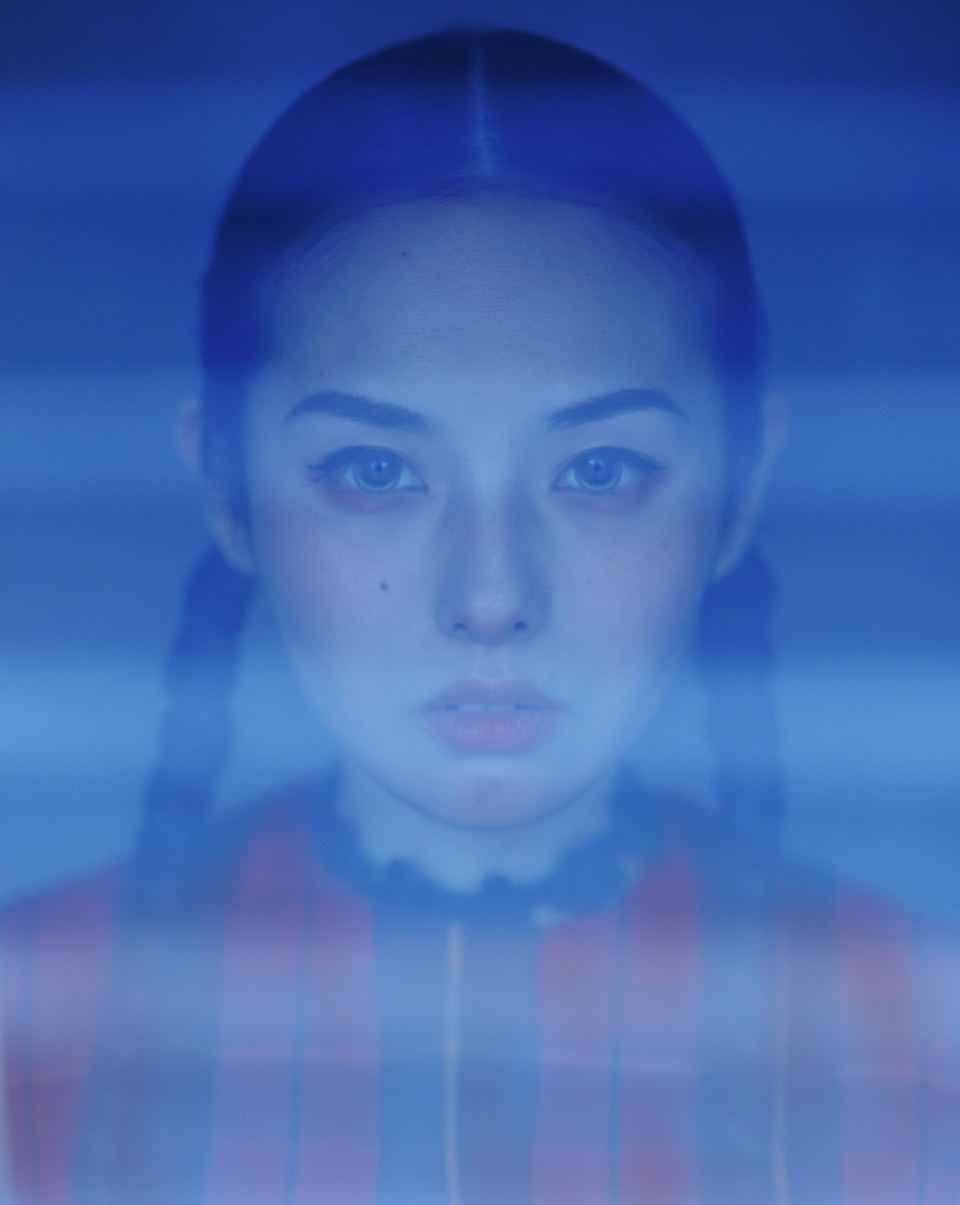
© AYANO SUDO, Courtesy MEM, Tokyo
I met the two models that look like twins in different places. It all began when I saw a guy at an exhibition who reminded me of a woman I'd photographed before with a similar aura about her. That's when I got the idea to photograph them together. This time I wanted to create a sort of fictional story through photos. In truth, I wanted to make a movie, but time was limited both on the production end and the viewing end. Still I thought if the sense of a narrative gets across even with 2D media, it might feel cinematic. There was no predetermined scenario, but I did the casting and chose the clothes and location as if I were making a movie. You've probably asked yourself after watching a movie “What was the meaning of that setting?” I tried to put a message into the work that would remind people of that sensation and feeling of beauty.
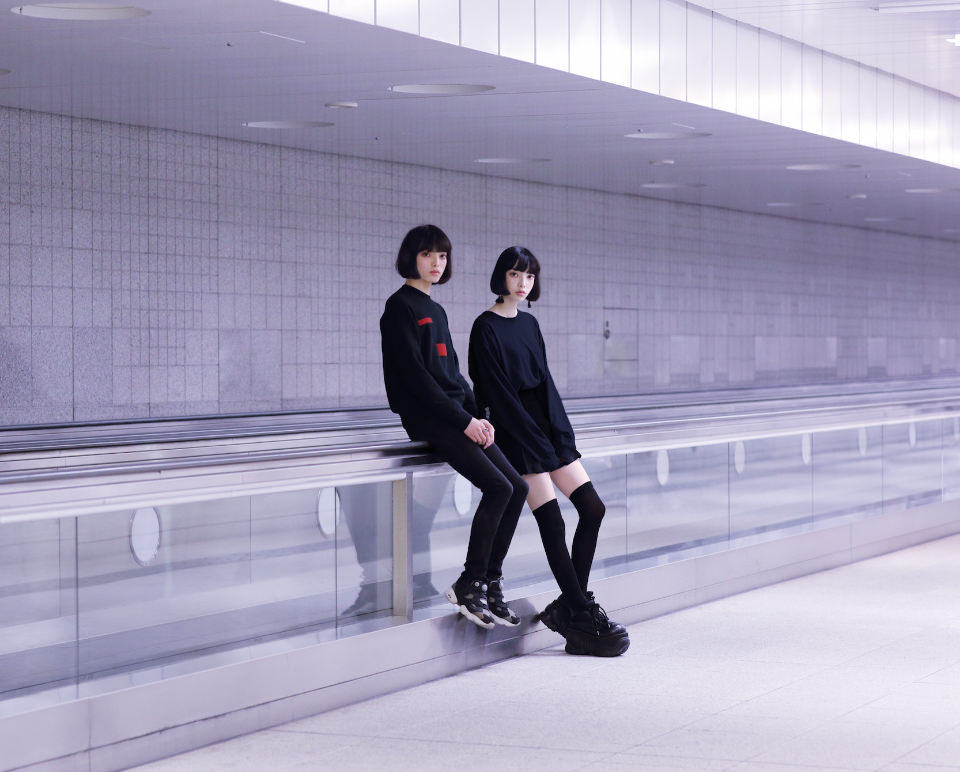
© AYANO SUDO, Courtesy MEM, Tokyo
The uncanny valley is an expression coined by the humanoid researcher Professor Masahiro Mori (emeritus professor, Tokyo Institute of Technology). If you visit the Miraikan in Odaiba, you can see humanoids that truly resemble humans. Their skin is made from latex and their eyelashes move in sync with their eye movements. At first glance they seem so real, but as you get closer, you experience this weird discomfort — something like dread or a malaise. The instant something not human becomes humanlike and starts pushing the extremes of realism, humans react with a strong revulsion. This is the uncanny valley. The pit of this valley is when a robot or another non-human thing is refined over and over again until it becomes almost human. But as you move out of and past the uncanny valley and the robot becomes less distinguishable from a human being, people begin to regard the robot as cute or beautiful.
That expression sprung to mind the moment I met the two models. They had an allure that was distinctly different from the universal beauty that humans naturally have. It was as if their physique or balance was unworldly — almost like the dolls I used to make: a beauty that transcended the uncanny valley. I wanted to shoot that pair because they made me feel like I was looking at something artificial, even though I was photographing living, breathing humans.
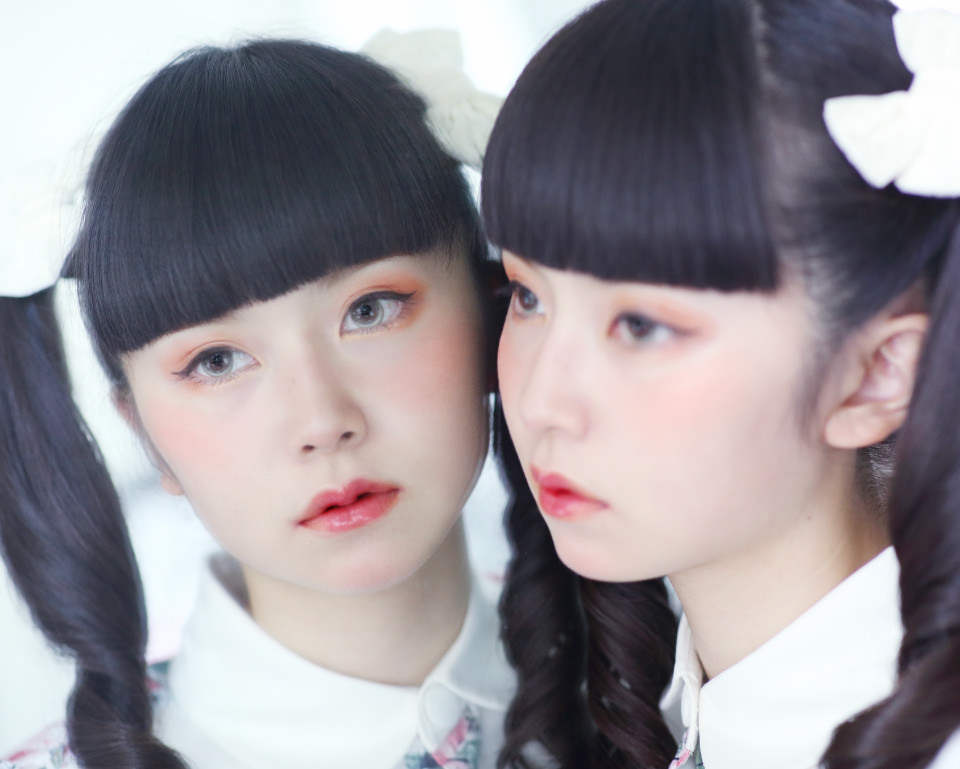
© AYANO SUDO, Courtesy MEM, Tokyo
I exhibited at five exhibitions in 2018. In doing so, I realized what I have been shooting all along is what doesn't exist in this world. For my February exhibition Anima/Animus: The Room of Kaneko Kuniyoshi at the Ginza Mitsukoshi gallery, after the painter Kaneko Kuniyoshi passed away, I visited her home and I tried photographing the beautiful departed spirits that I imagined had gathered there. For the New Planet Photo City: William Klein and Photographers Living in the 22nd Century exhibition at the 21_21DESIGN SIGHT gallery, I exhibited Gespenster, my collection on missing young women, and Autoscopy, my collection featuring doppelgängers that by all rights shouldn't exist in this world.
I exhibited works that I had created at the very beginning of my career at a group exhibition in Indonesia. These works were of my ideal appearance separate from myself. For I know something about love (at the Tokyo Photographic Art Museum), my installation portrayed young women who had gone missing, images of my ideal possessed by a partner I took an interest in, and photos of myself in death.
A common thread throughout these exhibitions was a desire of mine to transcend the uncanny valley — the incongruity I feel in reality. I have this belief that on the other side of that valley — in the next world, in other words — a form of beauty with a different vector exists. This sensation led me to the realization that I had been making up and photographing what is invisible in this world. Until then, I had worked unintentionally, but I now understand I'm enchanted by what isn't here but exists somewhere.
Around the world, there are all kinds of incidents that are brushed off or explained away as occult-like happenings. In my day-to-day life, whenever I encounter one of these — some strange space or location, some cryptic tradition or quirk in history, some mysterious event — I dig in and try to get to the bottom of it. An example of this is the doppelgänger phenomenon I've covered in my work where two identical people exist at the same time in the world. Through this process, I discover more phenomena and facts I didn't know about and I explore these as well. This sequence of actions is an attempt to see, or to make visible, what cannot be seen, and this has become part of my work.

© AYANO SUDO, Courtesy MEM, Tokyo
I traveled to Indonesia for a showing of my works, and it just so happened to coincide with Eid al-Adha (Festival of Sacrifice), an Islamic day of celebration. The festival derives from a tale in the Old Testament in which God commands Ibrahim to sacrifice his son as an act of obedience. The festival honors Ibrahim's faithfulness to God when he demonstrates his willingness to sacrifice his son. Today, the festival involves the sacrifice of live cows and sheep and the preparation of their meat while people chant prayers from the Quran for the healthy growth of their children.
Although I was interested in the ceremony, at first I was slightly fearful because I couldn't imagine what it would be like. So I made sure not expose any skin and decided not to take a camera, because I didn't want to antagonize people by taking photos at a holy spot. And besides that, I had no idea where the festival took place. That morning I went wandering out in the streets until I saw the townspeople walking toward one particular lane that turned out to be the approach to the festival. Eventually, I wound up at a place with a small neighborhood mosque. The people around me were dragging along cows and sheep to the mosque to be sacrificed. At the mosque itself, the sacrificial animals were being struck down with brute force and then carefully prepared by the dozens, while people chanted prayers from the Quran.
Just as I was recoiling from the sheer intensity of the commotion around me, an old man from the town spoke to me cheerfully and asked: “Take some photos. Why aren't you taking any photos? You have to show this to your family.”
Urged on by this old man, I timidly took out my smartphone and started shooting. Bit by bit I grew accustomed to the surroundings and moved forward to take better shots. By this time, my fear had melted away and I tapped away at the shutter button with a feeling of absolute beauty. The ceremony was completely unlike the grotesque scenes I had imagined in my head. It's hard to express the impressions I felt after being a witness to the ceremony, but the boisterous spirit of all the locals gathered together was surprisingly similar to a rice-cake pounding event in Japan. After the ceremony, the meat was carefully divvied up and each family took some of the meat home in a basket.
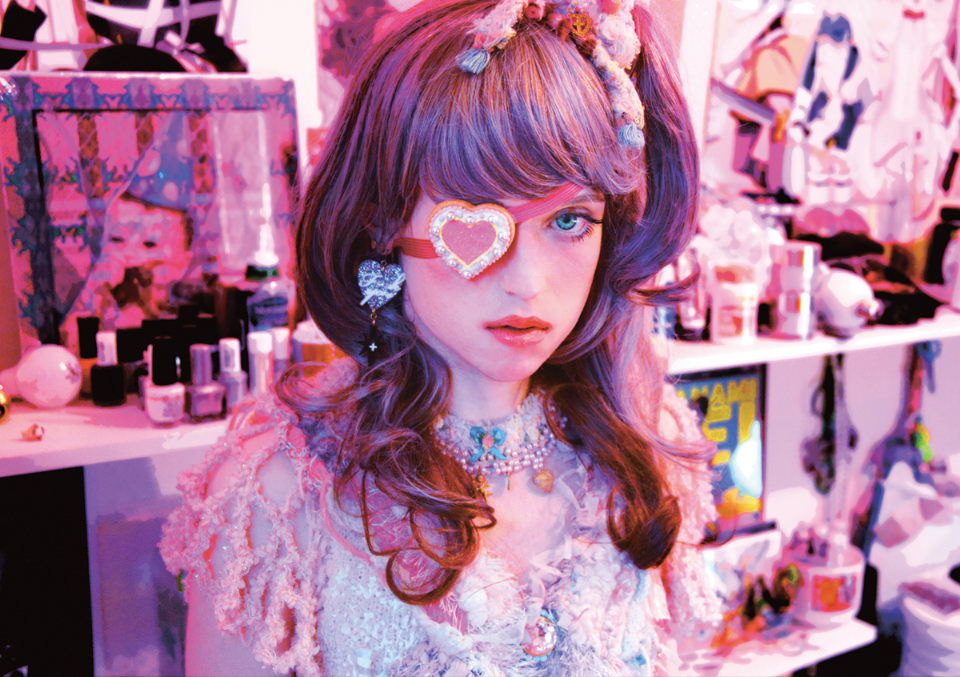
“Magical boy magical heart, Williamsburg, Brooklyn, N.Y.”, 2014 © AYANO SUDO, Courtesy MEM, Tokyo
That's exactly it. Eid al-Adha is a day to pray that their children will be healthy and to give thanks for receiving food to eat. As I watched a cow about to be cut up, a woman said to me: “Look closely. That's my son's cow!” The whole family was absolutely ecstatic. I had this stereotype of Islam being a strict and fearful religion, but I found a natural beauty in how closely it's intertwined with people's lives. The mosque had drainage channels to neatly drain away and dispose of the blood from the sacrificed animals. And even as cows and sheep were being slaughtered all around, the sunlight filtering through the trees made it a numinous spectacle.
I found the festival to be genuinely beautiful. But I think it's nearly impossible to show those photos publicly in Japan. There are questions about standards of decency, so I doubt it would be easy to publish the photos.

“Gespenster” © AYANO SUDO, Courtesy MEM, Tokyo
I believe it's my job to take the time to let things congeal as a coherent work. Even ceremonies like Eid al-Adha that I had thought were extremely cruel have meaning because they grew out of history and people's lives, and I grasp how sacred they are. So, for sure, I want to make use of that experience to produce something.
Gespenster, which dealt with young women who had gone missing, was like that, although I examined and presented it in my own fashion. Through photography, I want to consider why things people normally avoid — impure things — provoke uneasiness or fear. Even though I'm captivated by what does not exist in this world, ultimately I want to create works with clarity and genuine emotion that the viewer finds convincing, rather than something fantastical or inchoate.
When I saw Ikuro Suzuki's powerful photos of clouds at his 2014 solo exhibition Taste of Dragon, I observed that people in the past believed that clouds were embodied as dragons. Thus, the clouds in the photographs are the very dragon in the title. That experience had a major impact on me and made me realize photography is a medium with the power to capture such vague presences as tangible, visible things.
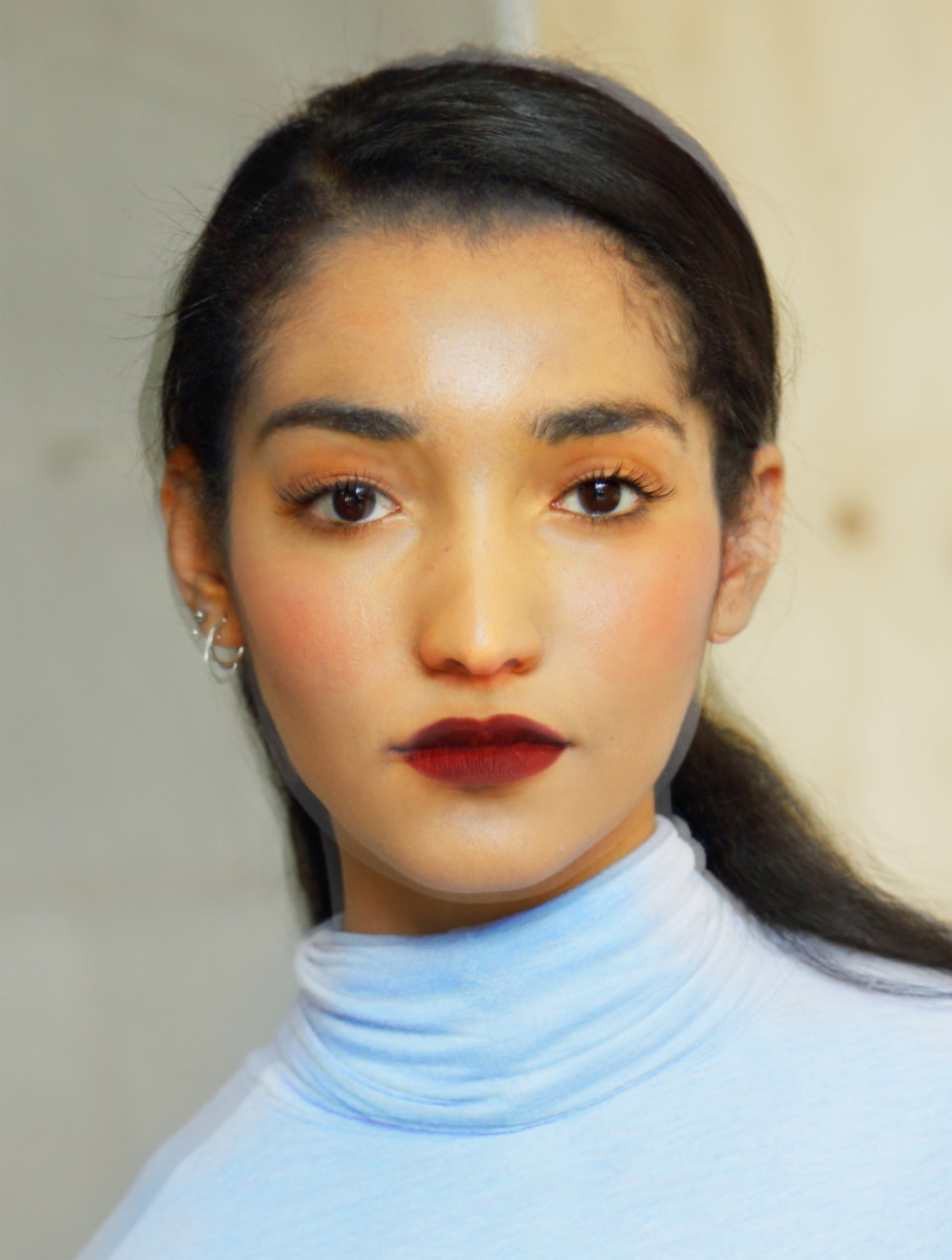
“Autoscopy” © AYANO SUDO, Courtesy MEM, Tokyo
Born in Osaka in 1986, Sudo graduated from the Graduate School of Arts, Kyoto City University of Arts in 2011. During her time as a student, she studied at the École des Beaux-Arts, Paris, on an exchange program. Sudo won the Mayor's Prize at the 2009 Kyoto City University of Arts' Annual Exhibition and in 2010 received a Special Jurists' Honorable Mention Award from Yasumasa Morimura at the MIO Photo Awards. She won the New Cosmos of Photography's Grand Prize in 2014. Some of her major works include Metamorphose (2011), a collection of photos of herself and a friend masquerading in ideal, gender-bending forms, Gespenster (2013 and 2014), a collection of self-portraits with Sudo cloaked as actual missing young women, and Autoscopy (2015), in which she explores the phenomenon of others resembling herself.